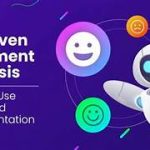AI for Predicting and Preventing Loan Defaults
In the financial services industry, managing loan defaults is a critical challenge. Loan defaults not only disrupt the financial stability of lending institutions but also have ripple effects on borrowers, investors, and the broader economy. Traditionally, banks and financial institutions relied on credit scores, income statements, and manual risk assessments to evaluate a borrower’s creditworthiness. However, these methods often fall short of accurately predicting loan defaults, especially in an era of increasing financial complexity.
Artificial Intelligence (AI) is transforming the way financial institutions predict and prevent loan defaults. By analyzing vast datasets, identifying subtle patterns, and offering real-time insights, AI provides a more accurate and proactive approach to credit risk management. This article explores the applications, methodologies, benefits, challenges, and future prospects of AI in predicting and preventing loan defaults.
Understanding Loan Defaults
A loan default occurs when a borrower fails to meet the obligations of a loan agreement, typically by missing payments. Default can result from various factors, such as job loss, medical emergencies, economic downturns, or poor financial management. For lenders, defaults lead to revenue losses, increased operational costs, and reputational risks. Preventing loan defaults is therefore a top priority for financial institutions.
AI in Loan Default Prediction
AI-powered systems excel at analyzing complex datasets to predict the likelihood of loan defaults. These systems leverage machine learning algorithms, natural language processing, and predictive analytics to assess credit risk and identify borrowers who may default. Key applications include:
1. Enhanced Credit Risk Assessment
AI evaluates a broader range of factors beyond traditional credit scores, including spending habits, employment history, social media behavior, and economic trends. This holistic approach provides a more accurate picture of a borrower’s financial health.
2. Early Warning Systems
AI systems monitor borrower behavior and financial conditions in real time. For instance, irregular payment patterns or sudden changes in income can trigger alerts, enabling lenders to take preventive action before a default occurs.
3. Predictive Modeling
Machine learning models analyze historical data to identify patterns associated with loan defaults. These models continuously learn and adapt, improving their predictive accuracy over time.
4. Real-Time Decision-Making
AI enables real-time analysis of loan applications, reducing the time required for credit decisions while ensuring a thorough risk assessment.
5. Segmentation of Risk Profiles
AI classifies borrowers into different risk categories, allowing lenders to tailor loan terms, interest rates, and repayment plans to each borrower’s risk profile.
Preventing Loan Defaults with AI
Beyond prediction, AI plays a proactive role in preventing loan defaults by offering personalized solutions and interventions:
1. Customized Repayment Plans
AI analyzes a borrower’s financial situation to design flexible repayment plans that align with their cash flow. For example, borrowers with variable income can benefit from plans that adjust payment amounts based on monthly earnings.
2. Behavioral Nudges
AI-powered systems send reminders, alerts, and nudges to borrowers about upcoming payments or changes in financial conditions. Behavioral insights can encourage borrowers to prioritize loan repayments.
3. Fraud Detection
AI identifies fraudulent activities or misrepresentation in loan applications, reducing the likelihood of defaults caused by dishonesty.
4. Financial Literacy Tools
AI chatbots and virtual advisors educate borrowers about financial management, helping them make informed decisions and avoid default.
5. Dynamic Risk Management
AI systems adapt to changing economic conditions by updating risk models and recommending adjustments to loan portfolios.
AI Techniques for Loan Default Prediction
AI employs a range of techniques to predict and prevent loan defaults effectively:
1. Machine Learning Algorithms
- Logistic Regression and Decision Trees: Commonly used for binary classification problems like default prediction.
- Random Forest and Gradient Boosting: Handle complex datasets with high accuracy.
- Neural Networks: Analyze non-linear relationships and high-dimensional data.
2. Natural Language Processing (NLP)
NLP analyzes unstructured data, such as social media posts, customer reviews, or emails, to gauge a borrower’s financial intentions or stress levels.
3. Predictive Analytics
AI integrates historical data, market trends, and borrower behavior to predict future outcomes.
4. Big Data Analytics
AI processes large volumes of structured and unstructured data from multiple sources, such as credit bureaus, transaction records, and public databases.
5. Sentiment Analysis
By analyzing borrower sentiment through communication patterns, AI can identify early signs of financial distress.
Benefits of AI in Loan Default Management
The integration of AI into loan default prediction and prevention offers several advantages:
1. Increased Accuracy
AI’s ability to analyze large datasets and detect subtle patterns results in more accurate risk assessments than traditional methods.
2. Cost Efficiency
By automating risk assessment and monitoring, AI reduces operational costs associated with manual processes.
3. Proactive Risk Management
AI enables lenders to intervene early, preventing defaults and minimizing losses.
4. Improved Customer Experience
Personalized repayment plans and financial tools enhance customer satisfaction and loyalty.
5. Scalability
AI systems can handle growing volumes of loan applications and borrower data without compromising efficiency.
6. Reduced Bias
AI models, when properly trained, minimize human biases in credit decisions, promoting fair lending practices.
Challenges in AI Adoption
Despite its potential, AI in loan default management faces several challenges:
1. Data Quality and Availability
AI models require high-quality, comprehensive data to perform accurately. Incomplete or biased datasets can lead to inaccurate predictions.
2. Interpretability
Complex AI models, such as deep learning, are often considered “black boxes,” making it difficult to explain their decisions to stakeholders or regulators.
3. Regulatory Compliance
Financial institutions must comply with strict regulations regarding data privacy, fairness, and transparency in AI systems.
4. Ethical Concerns
Over-reliance on AI raises ethical questions about accountability and the potential for discriminatory practices.
5. Integration with Legacy Systems
Many banks and lenders rely on outdated infrastructure that may not support advanced AI tools.
6. Cost of Implementation
Developing and deploying AI systems can be expensive, particularly for smaller institutions.
Case Studies: AI in Action
1. Zest AI
Zest AI uses machine learning to help lenders make more accurate credit decisions. Its models analyze thousands of variables to predict loan defaults, improving approval rates while minimizing risk.
2. Upstart
Upstart, an AI-driven lending platform, evaluates non-traditional data points such as education and job history to assess credit risk. The platform has significantly reduced default rates for its partner banks.
3. JPMorgan Chase
JPMorgan Chase employs AI to monitor borrower behavior and identify early signs of financial distress. This proactive approach has improved the bank’s loan performance metrics.
Future Prospects of AI in Loan Default Management
The future of AI in loan default management is promising, with advancements expected in several areas:
1. Explainable AI (XAI)
Developing interpretable AI models will enhance transparency, making it easier for stakeholders to trust and understand AI-driven decisions.
2. Integration with Blockchain
Blockchain technology will provide secure and transparent data sources, improving the reliability of AI models.
3. Real-Time Monitoring
Enhanced real-time analytics will enable even faster responses to emerging risks.
4. Greater Accessibility
As AI technology becomes more affordable, smaller financial institutions will also adopt AI-driven tools.
5. Ethical AI Frameworks
Developing ethical guidelines for AI use in lending will ensure fairness and accountability.
Conclusion
AI has emerged as a game-changer in predicting and preventing loan defaults. By leveraging advanced analytics, machine learning, and real-time monitoring, AI enables financial institutions to assess credit risk more accurately, mitigate potential losses, and enhance customer satisfaction. While challenges remain, continued advancements in AI technology and regulatory frameworks will further strengthen its role in credit risk management. As the financial landscape evolves, AI will undoubtedly play a pivotal role in shaping the future of lending.


